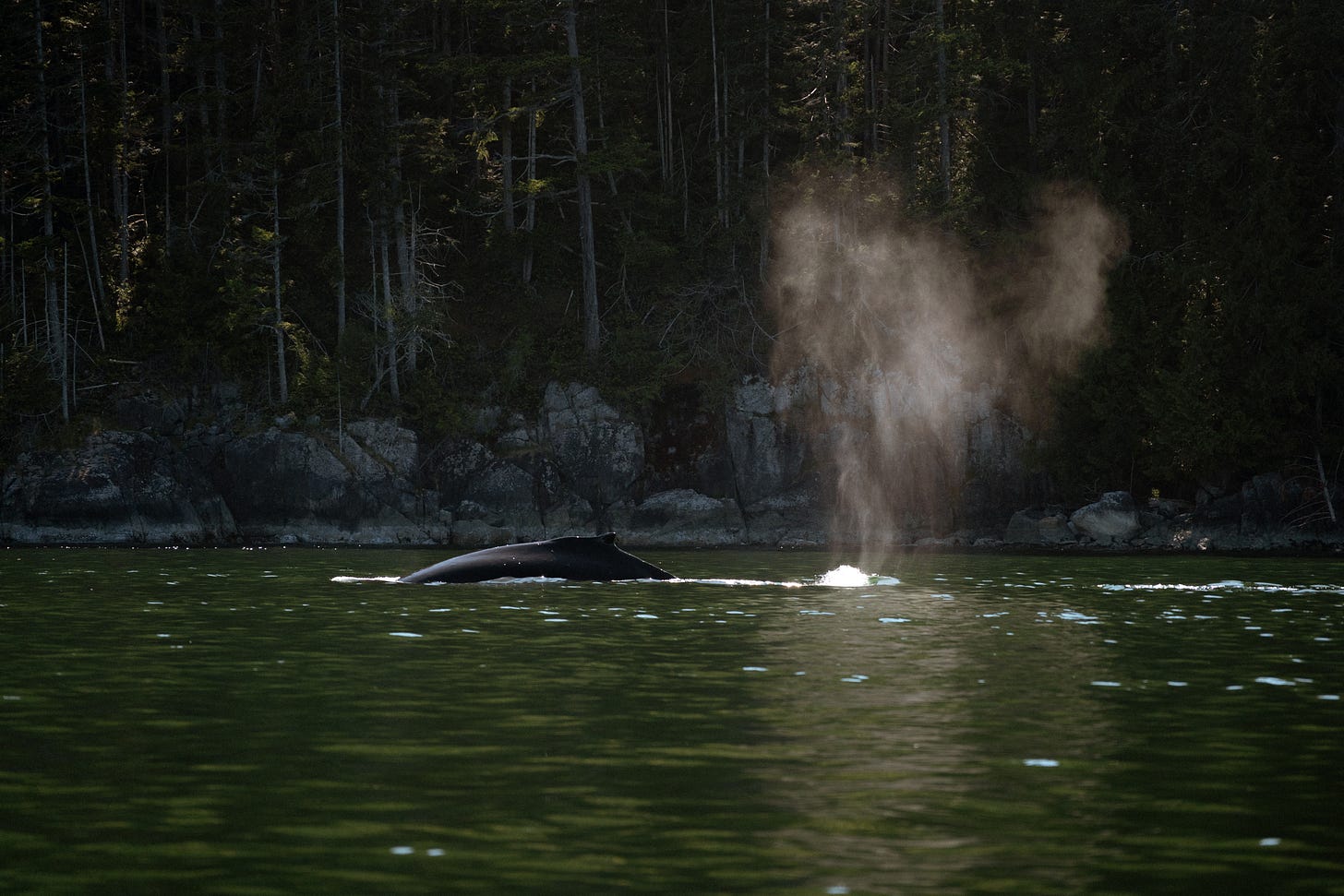Janet stood on the edge of a small cliff, her salmon-shaped rattle rising and falling in rhythm with her song. She faced us, the turbulent water behind her—where a humpback whale had surfaced just moments before. Her voice carried not over stillness, but into a living, breathing coastline—steady, unadorned.
She sang for the missing and murdered Indigenous women, her voice rising toward the bay where her community was once forced to live—then forced to leave.
Once a nomadic people, the Xwémalhkwu, or “People of the fast-running waters,” were made to set their foundations into this hillside, at the mouth of Bute Inlet, within Calm Passage—to Aupe, or New Church House.
Now the land is overgrown with cedars, moss, and ferns. Glass from broken windows mixes into the rich soil, sparkling as we follow her along the trail—quiet traces of what was once built, and then abandoned.
As she sings, behind my sunglasses, tears rise—just as hers had earlier, when she spoke about the impact of residential and day schools on her family. She doesn’t know how she missed going to one, while her cousins and the family around her did. What a heavy weight to carry—that you were the ‘lucky’ one. And yet she knew she still passed this pain on to her children and grandchildren.
As tears trickled down her cheeks, she didn’t apologize. “Crying,” she said, “is part of my healing. It’s okay to cry.”
She unknowingly echoed something I’ve had to work through myself. It’s taken me years to begin to soften—to let tears well—having grown up with the idea that crying wouldn’t help me. That it would make me less credible. Keep the stoic facade.
My story is not hers. My experience is not hers. I will never know her pain. We come from different places, different histories.
But as one woman looking at another—sharing, singing about her life and her people—I couldn’t help but think about the pain that’s been passed down in my own family, too. Not the same pain, not the same story—but still passed. We all carry things we didn’t choose. And sometimes, we pass them on.
I’ll think about this moment for a long time—the power of story, the willingness to share, the way humanity can feel connected even through vastly different experiences.
It takes courage to speak. To be seen. To risk your story being dismissed, misunderstood—or met with silence. For some, that risk is far greater than for others.
Still, the act of sharing matters. You never know what your story might stir in someone else, simply because you chose to offer it.
Author’s note:
I hesitated to share this moment. It’s not my story, it belongs to the Homalco people, and to Janet, who generously shared her time, voice, and history. I worried about making this piece too much about myself. But this was a moment I’ll carry for a long time. Writing about it felt like a way to hold that memory close—to remember what I heard, and what it stirred. I share it here with deep gratitude and respect.
If you’d like to learn more about the Homalco First Nation, their culture, language, and tourism initiatives, you can explore these links:
More about the Homalco Wildlife & Cultural Tours
Personal Work
While on the tour, we had the chance to watch humpback whales slowly meandering along the edge of the islands. I didn’t take many photos that day—instead, I brought along a small Osmo to capture video. I’m planning to incorporate some of that footage into future videos documenting our final months living on the coast before our move to Alberta.
Hey, you made it to the end! I’ve got a little secret for you: on the tour, Janet showed us how to twist cedar into bracelets. Corey’s turned out smooth and even—serene, almost. Mine? Lumpy, thick, and wildly uneven. I couldn’t help but laugh. It felt like a physical manifestation of my perfectionism—me, overthinking each twist while the cedar pushed back with every loop. The more I tried to control it, the more unruly it became.
Take from that what you will. Personally, I think I was handed a pretty on-the-nose lesson about control.





